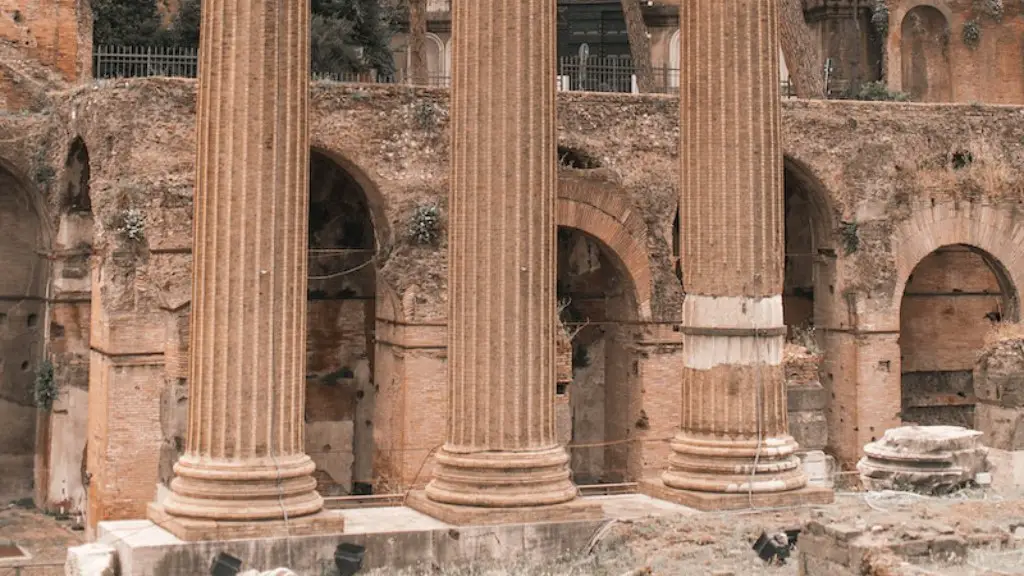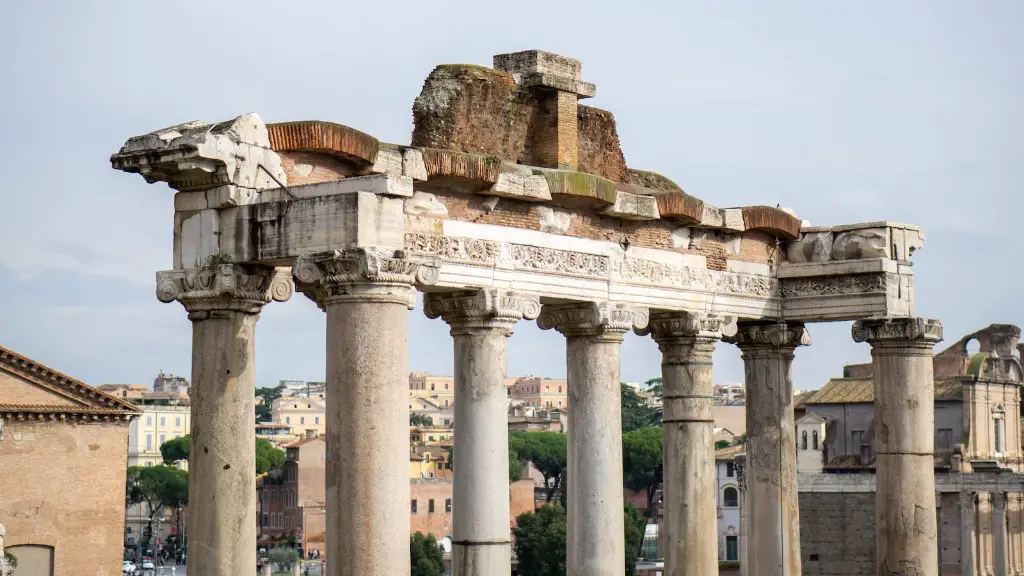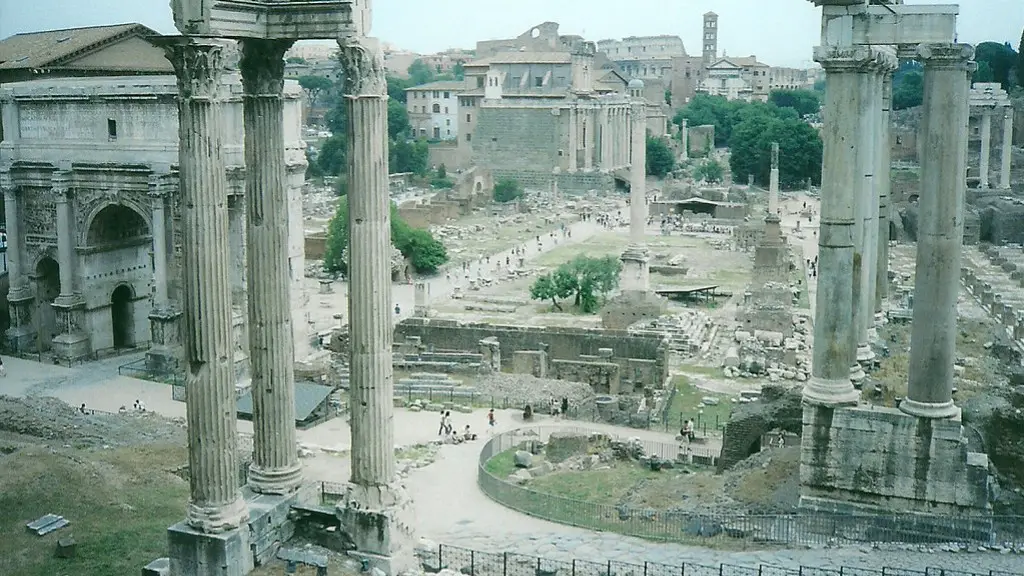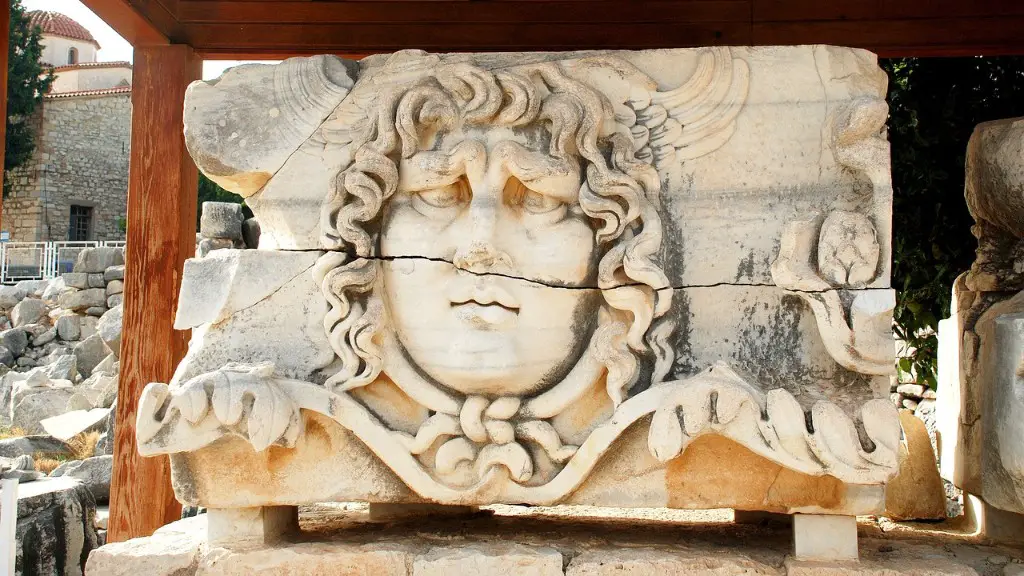The ancient Romans were very ingenious in their water storage methods. They developed a complex system of aqueducts and reservoirs that allowed them to store water for both public and private use. This system not only provided the Roman people with a reliable source of water, but it also helped to keep the city clean and free of disease.
The Roman water supply was notoriously inefficient and often subject to contamination. The aqueducts that transported water to Rome often leaked, and the water was not always clean. In addition, the city’s water supply was often disrupted by wars and invasions. As a result, the ancient Romans had to be creative in their water storage methods. They often collected rainwater in cisterns and stored it for later use. In some cases, they even built aqueducts that diverted water from nearby rivers into the city.
How did ancient Romans carry water?
The Roman aqueduct was a highly advanced engineering feat for its time. The aqueducts were used to transport fresh water to highly populated areas, which was a great benefit to the people living there. The aqueducts were an important part of Roman life and helped to make the city a more livable place.
The Roman system of sewers was very complex, with a system of stone-covered channels that carried waste away from the latrines. The waste was then flushed into the main sewage system and eventually into a nearby river or stream. This system was very effective in keeping the streets clean and preventing the spread of disease.
How were Roman aqueducts maintained
The Roman engineers who designed the aqueducts used gravity to keep the water moving. If the channel was too steep, water would run too quickly and wear out the surface. Too shallow, and water would stagnate and become undrinkable. The Romans built tunnels to get water through ridges, and bridges to cross valleys.
The aqueducts were one of the most impressive engineering feats of the Roman Empire. By creating a system of underground pipes and siphons, the Romans were able to move water great distances with a consistent, shallow slope. This allowed them to provide clean water to their cities and towns, as well as to irrigate their crops. The aqueducts were a vital part of the Roman Empire and helped to make it one of the most advanced civilizations of its time.
How did ancient humans store water?
In prehistoric times, water may have been carried in bladders of dead animals stitched together, animal horns or plant shells such as coconuts. Later, clay or mud was used to seal wicker baskets for carrying water. The ancients began using pottery to carry water in 5000 BC. This was a more efficient way to carry water, as it prevented leaks and kept the water cooler.
The ancient trade route between India and China was well-known for its many forts that were built to protect travelers. These forts also had their own water harvesting and storage system in the form of rock-cut cisterns, ponds, tanks and wells. These systems are still in use today and provide a vital source of water for both locals and travelers.
How did the Romans keep their baths clean?
Bathing was originally a communal activity in which people would clean themselves with oil and a strigil. However, as time went on, people began to prefer individual baths and the use of soap. The largest known baths could accommodate up to 3000 people at a time.
Access to proper hygiene facilities is widely considered a basic human right, yet millions of people around the world live without adequate access to them. In many cases, the poor are disproportionately affected by this lack of access.
Without proper facilities, people are more likely to contract diseases and illnesses, which can lead to further poverty and inequality. This is why it is so important for governments and other organizations to provide access to hygiene facilities for the poor.
There are many ways to improve access to hygiene facilities for the poor. One way is to build more public toilets and bathing facilities in areas where they are lacking. Another way is to provide subsidies or discounts for those who cannot afford to pay for private facilities.
No matter what approach is taken, it is clear that improving access to hygiene facilities for the poor can have a tremendous impact on the health and wellbeing of communities.
Did Roman houses have toilets
Private toilets were found in Roman houses and apartments. Pompeii and Herculaneum have good examples of these. Reconstruction of a single latrine next to the culina (kitchen) at the Pompejanum (Germany), an idealized replica of a Roman villa.
At its peak, the Roman aqueduct system spanned more than 90,000 kilometers, with over 300 aqueducts in operation. Construction of aqueducts peaked in the 1st and 2nd centuries AD.
The Roman aqueducts were among the most impressive and complicated engineering feats of their time. They are remarkable not only for their size and complexity, but also for their longevity – many of the aqueducts built by the Romans are still in use today.
Did ancient Romans have running water in their homes?
Although ancient Rome and modern day Rome share the commonality of having public fountains that supplied potable water, these fountains served as the only source of potable water for ancient Romans. In contrast, the contemporary residents of Rome have private access to water in their homes. This distinction is due to the fact that only the wealthy could afford to have private access to water in ancient Rome.
A hypocaust is a type of heating system that uses a furnace to heat a series of hollow chambers between the ground and the floor, as well as up pipes in the wall. This type of system was very common in public baths and is considered the world’s first central heating system.
Are Roman aqueducts still standing
The Acqua Vergine is a Roman aqueduct that is still in use today. Built in 19 BC, it has been restored several times but remains in working order. It brings water to some of Rome’s fountains, including the Trevi Fountain.
tradition estimates for the flow rate of the aqueduct have been around 100,000 to 150,000 cubic meters (25 to 40 million gallons) per day, but by analyzing the travertine deposits left on the interior walls and floor of the aqueduct, researchers have calculated a flow rate of only 14 cubic meters per second. While this is lower than the traditional estimates, it is still a significant amount of water.
Can aqueducts carry water uphill?
Aqueducts are a type of bridge that was used in ancient times to transport water from one place to another. They are similar in appearance to modern bridges, but instead of carrying vehicles or people, they carried water along the top. Aqueducts were a product of the well-respected Roman skill and talent, and were used to transport water from one place to another using gravity.
In the Norwegian ship graves Oseberg and Gokstad, large troughs were found that could hold 500 litres and 750 litres of water. This would have been enough to sustain a crew of about 30 people for two days. Several sources mention that there had to be a minimum of 4 litres per person per day.
How did ancient Greeks store water
In ancient Greece, the increase in urban population led to a need for better water transport, storage, and distribution networks. Aqueducts were built to transport water, and cisterns and dams were used to store it. These improvements helped to ensure that the people had access to clean, fresh water.
Ollas were used by Native Americans for cooking, storage and serving food. They were often used for storing water, especially in the hotter southwestern regions. The neck of the pot was made narrow to prevent evaporation.
Final Words
The ancient Romans stored water in aqueducts.
The ancient Romans built aqueducts to bring water into the city, and they stored it in cisterns.





